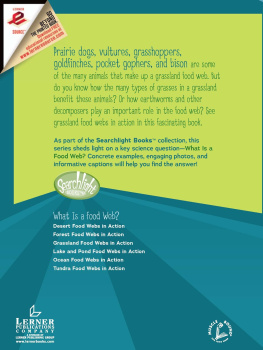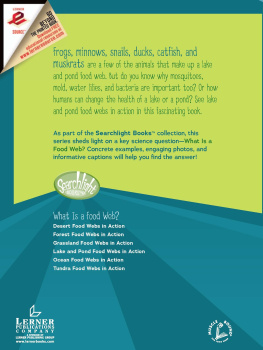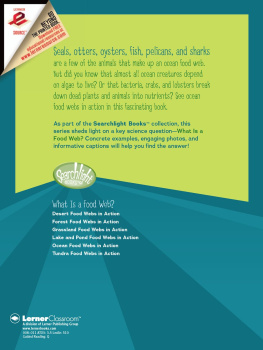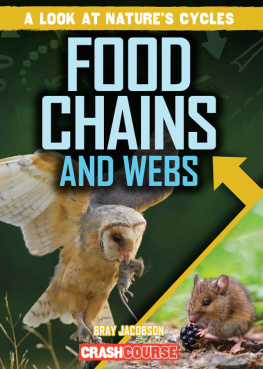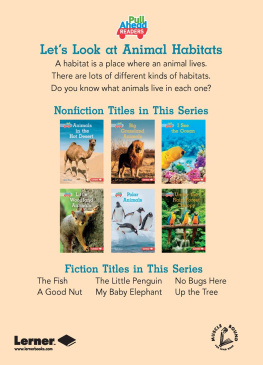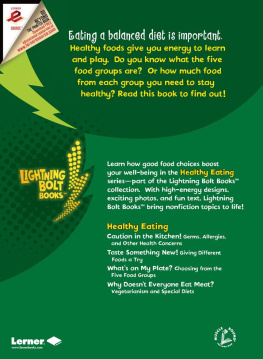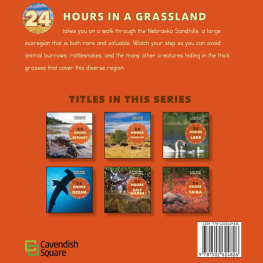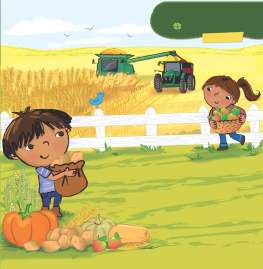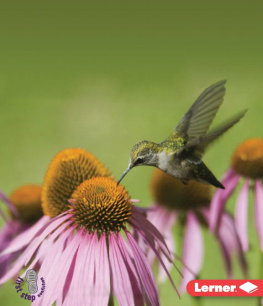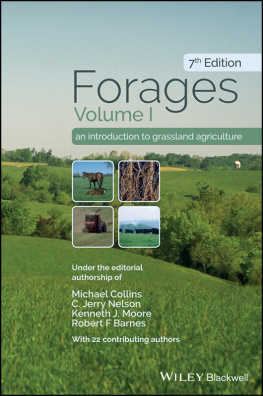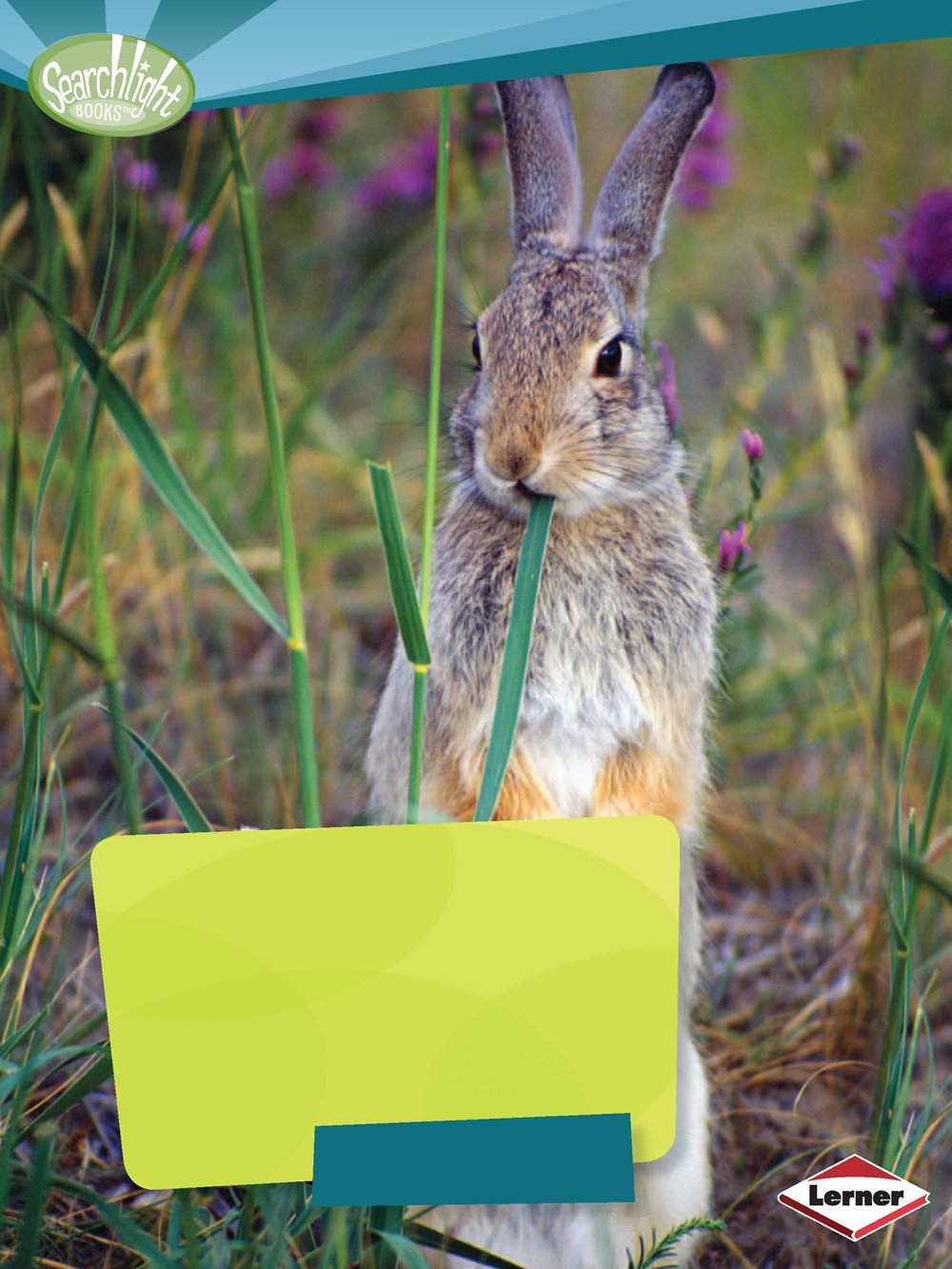Grassland
Food Webs
in Action
Paul Fleisher
Copyright 2014 by Lerner Publishing Group, Inc.
All rights reserved. International copyright secured. No part of this book may be
reproduced, stored in a retrieval system, or transmitted in any form or by any means
electronic, mechanical, photocopying, recording, or otherwisewithout the prior written
permission of Lerner Publishing Group, Inc., except for the inclusion of brief quotations in
an acknowledged review.
Lerner Publications Company
A division of Lerner Publishing Group, Inc.
241 First Avenue North
Minneapolis, MN 55401 U.S.A.
Website address: www.lernerbooks.com
Library of Congress Cataloging-in-Publication Data
Fleisher, Paul.
Grassland food webs in action / by Paul Fleisher.
p. cm. (Searchlight bookswhat is a food web?)
Includes index.
ISBN 9781467712934 (lib. bdg. : alk. paper)
ISBN 9781467717755 (eBook)
1. Grassland ecologyJuvenile literature. 2. Grassland plantsJuvenile literature.
3. Grassland animalsJuvenile literature. I. Title.
QH541.5.P7F58 2014
577.4dc23 2012032548
Manufactured in the United States of America
1 BP 7/15/13
Contents
A GRASSLAND FOOD WEB
Chapter
GRASSLANDS
Tall grasses bend in the wind.
Insects buzz in the warm air.
Birds soar through the clear blue
sky. There are few trees. You can see
for miles. You are in a grassland.
This place is a
grassland. What are
some things you might
see in a grassland?
Grasslands are found in many parts of the world. In
the United States and Canada, grasslands are called
prairies. In other places, they are called steppes or
savannas.
Grasslands are found in places that dont get enough
rain for many large trees to grow. Instead, grasses and
other low plants grow there. These plants need less
water than big trees.
In Africa, grasslands
are called savannas.
Savannas have only a
few trees.
Important Environments
Grasslands are some of Earths most important
environments. An environment is the place where any
creature lives. The environment includes air, soil, weather,
and other plants and animals.
Pronghorn antelopes
eat grasses and
other plants.
Foxes eat meat.
This fox is eating
a pheasant.
Plants and animals in a grassland depend on one
another. Some animals eat plants. Some animals are
meat eaters. They eat other animals. When plants
and animals die, they break down into chemicals. The
chemicals become part of the soil. Some of these
chemicals help plants grow.
Food Chains
Energy moves from one living thing to another. A chain
food shows how the energy moves. The energy for life
comes from the sun. Plants store the suns energy in
their leaves, stems, and roots. When an animal eats a
plant, the animal gets some of the suns energy from the
plant. The energy moves farther along the food chain
each time one living thing eats another.
A lion is hunting a zebra.
If the lion eats the zebra,
the lion will get energy
from the zebra.
Grasslands have many food chains. Imagine that a
prairie dog eats some grass. Then a hawk eats the prairie
dog. When the hawk dies, a vulture eats its body. The
suns energy passes from the grass to the prairie dog.
Then it goes to the hawk. Then it passes to the vulture.
This prairie dog is
eating grass.
Food Webs
But prairie dogs dont eat only grass. They eat many
different kinds of plants. Hawks eat other animals
besides prairie dogs. They also eat mice and small
birds. And vultures eat all kinds of dead animals. An
environments food web is made of many food chains.
A food web shows how all creatures depend on one
another for food.
This red- tailed
hawk is eating
a mouse.
Chapter
GRASSLAND
PLANTS
Plants use sunlight to make food.
Because plants produce food, they
are called producers. Plants also
make oxygen. Oxygen is a gas in the air.
The way plants make food and oxygen
is called photosynthesis. Plants need carbon
dioxide, sunlight, and water for photosynthesis.
Carbon dioxide is another gas in the air.
A grasslands energy
comes from the sun.
Plants use sunlight to
make food. What else
do plants make?
A plants leaves take in carbon dioxide and sunlight.
The plants roots take in water. The plant uses energy
from sunlight to turn the carbon dioxide and water into
sugar and starch. Sugar and starch are the plants own
food. The plant stores this food in its leaves and roots.
HOW PHOTOSYNTHESIS WORKS
The leaves of big bluestem grass turn sunlight,
carbon dioxide, and water into food for the plant.
As the plant makes food, it also makes oxygen. The
oxygen goes into the air. Animals breathe in the oxygen.
They breathe out carbon dioxide. Plants use the carbon
dioxide to make more food.
ALL ANIMALS BREATHE OXYGEN. THESE
ANIMALS ARE GUANACOS. THEY LIVE
IN GRASSLANDS IN SOUTH AMERICA.
Nutrients
Plants grow in soil. The soil contains special chemicals
called nutrients. Living things need nutrients to grow.

